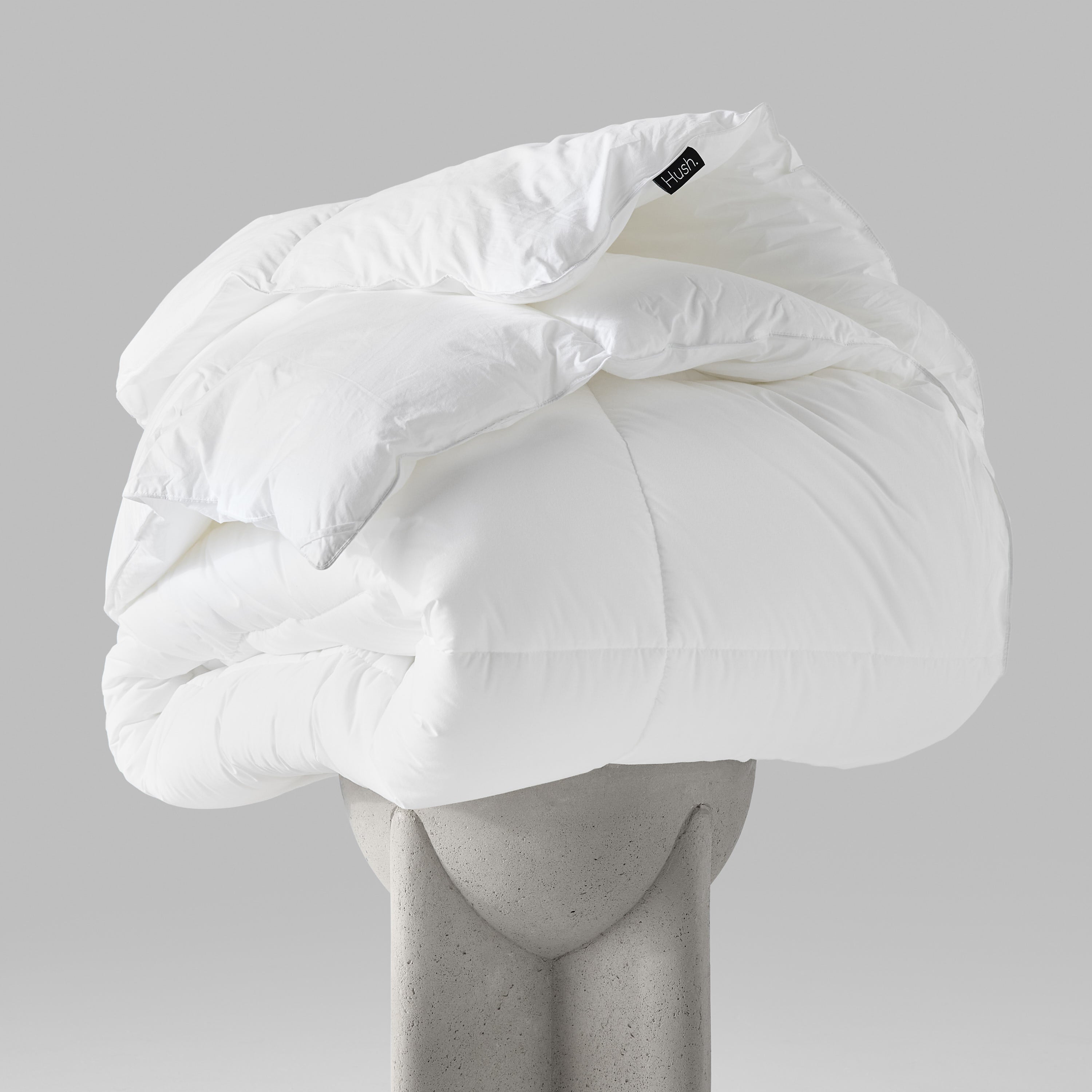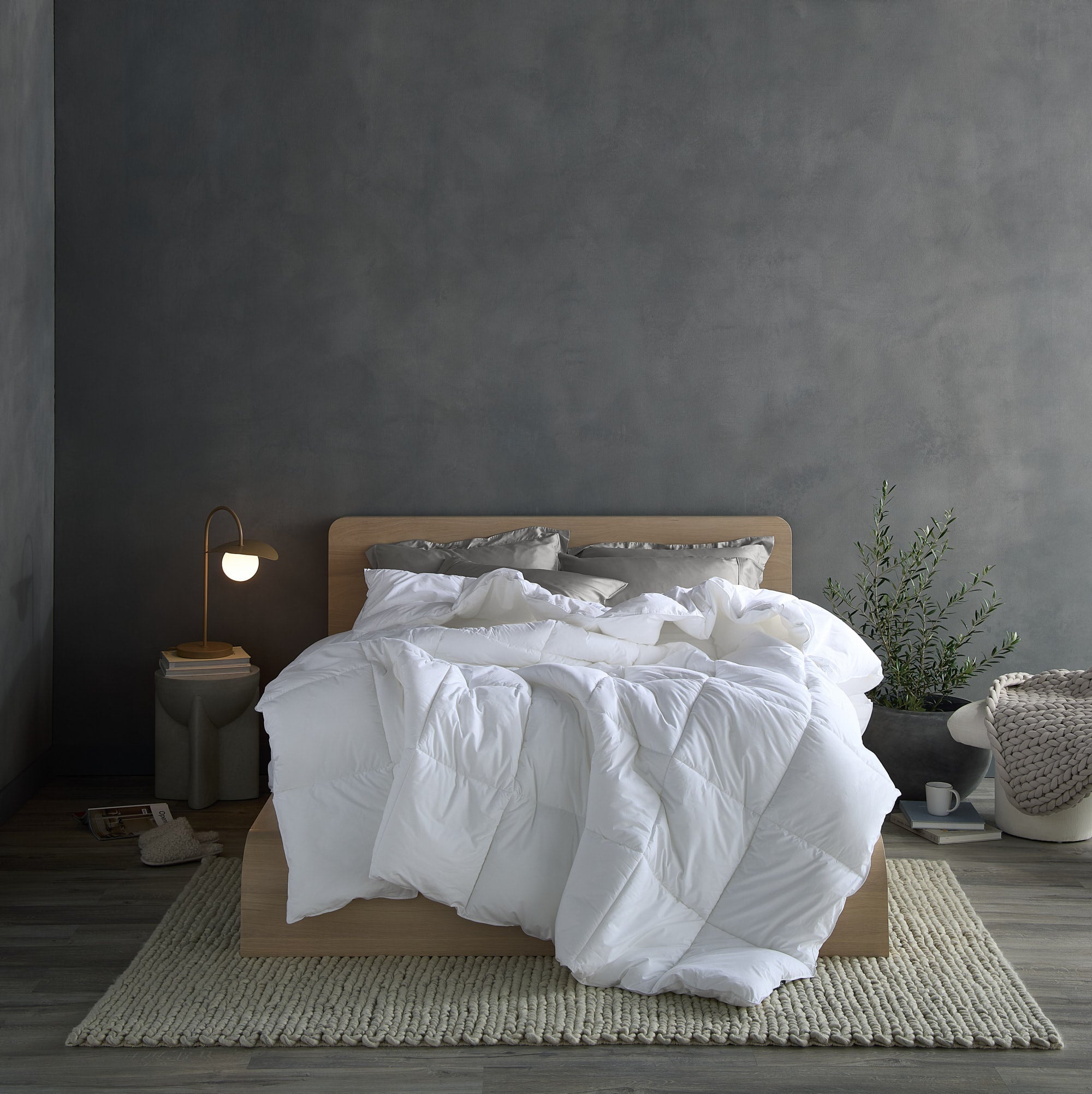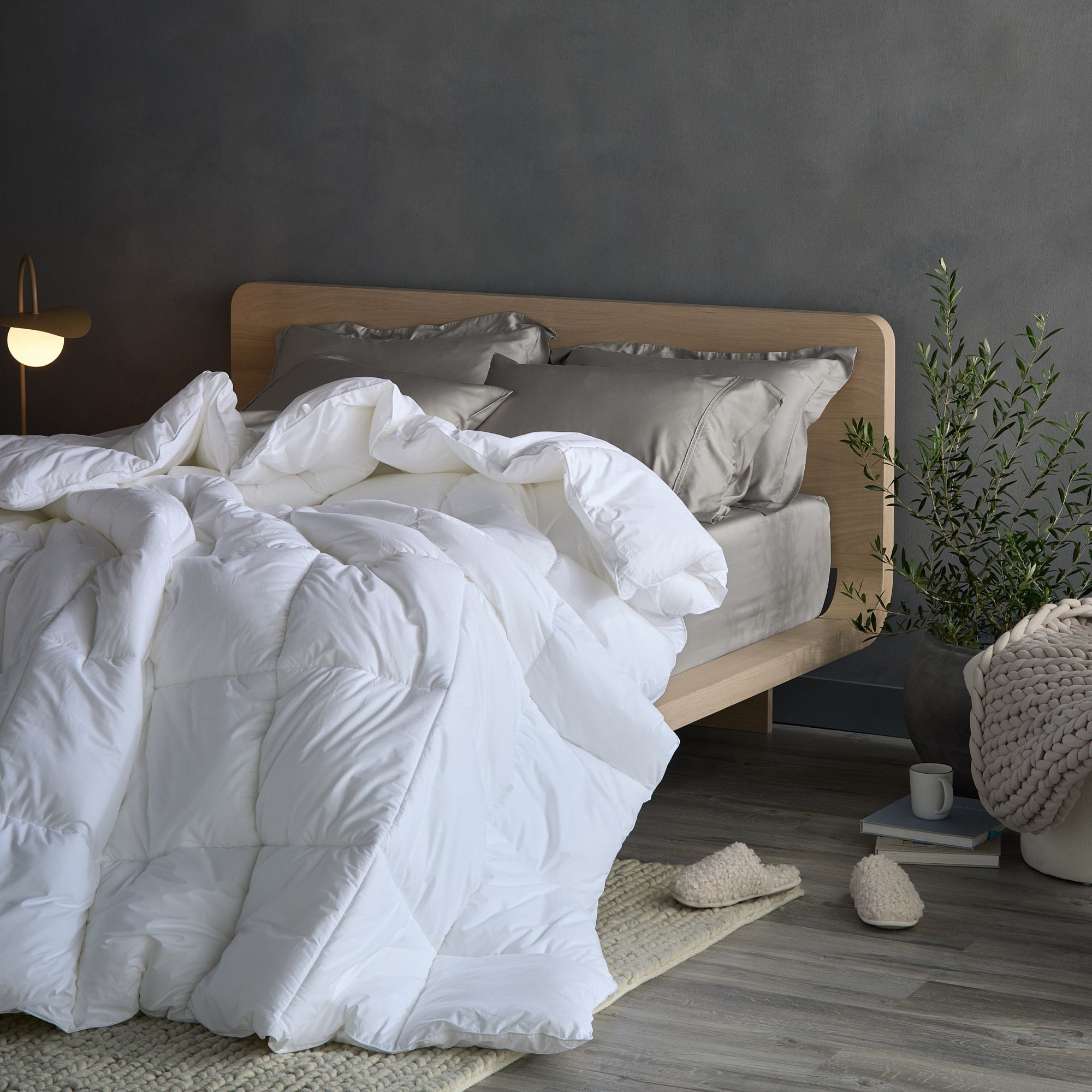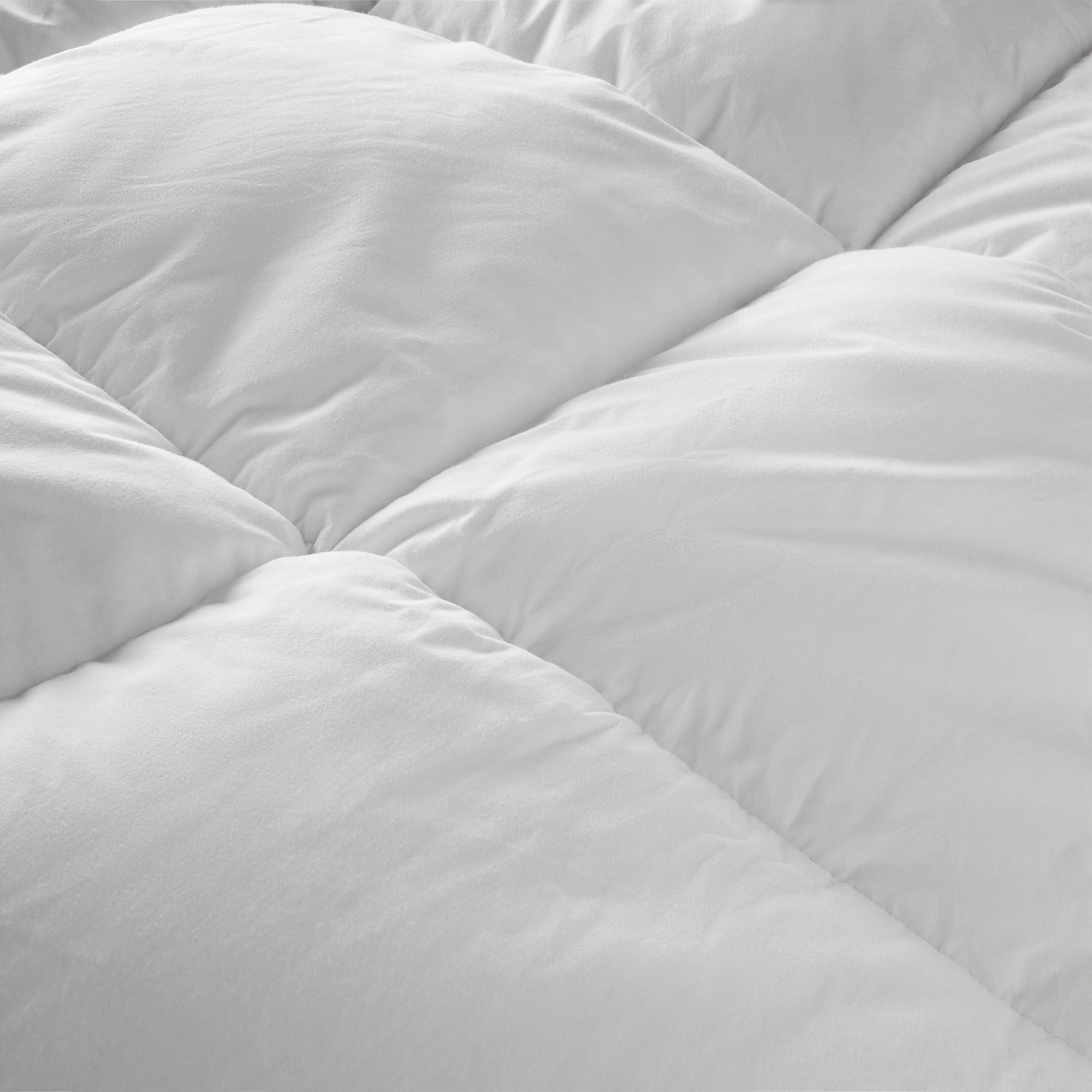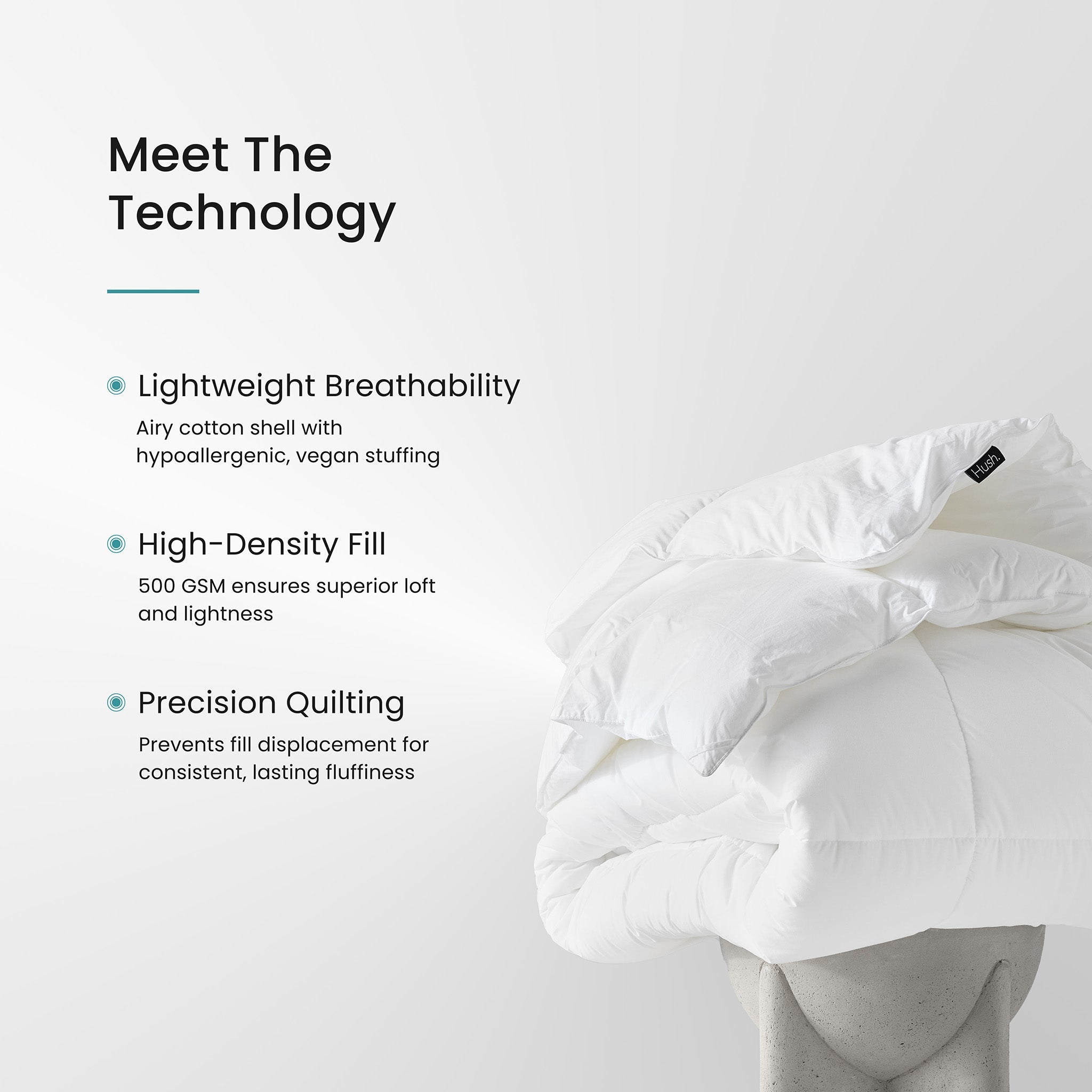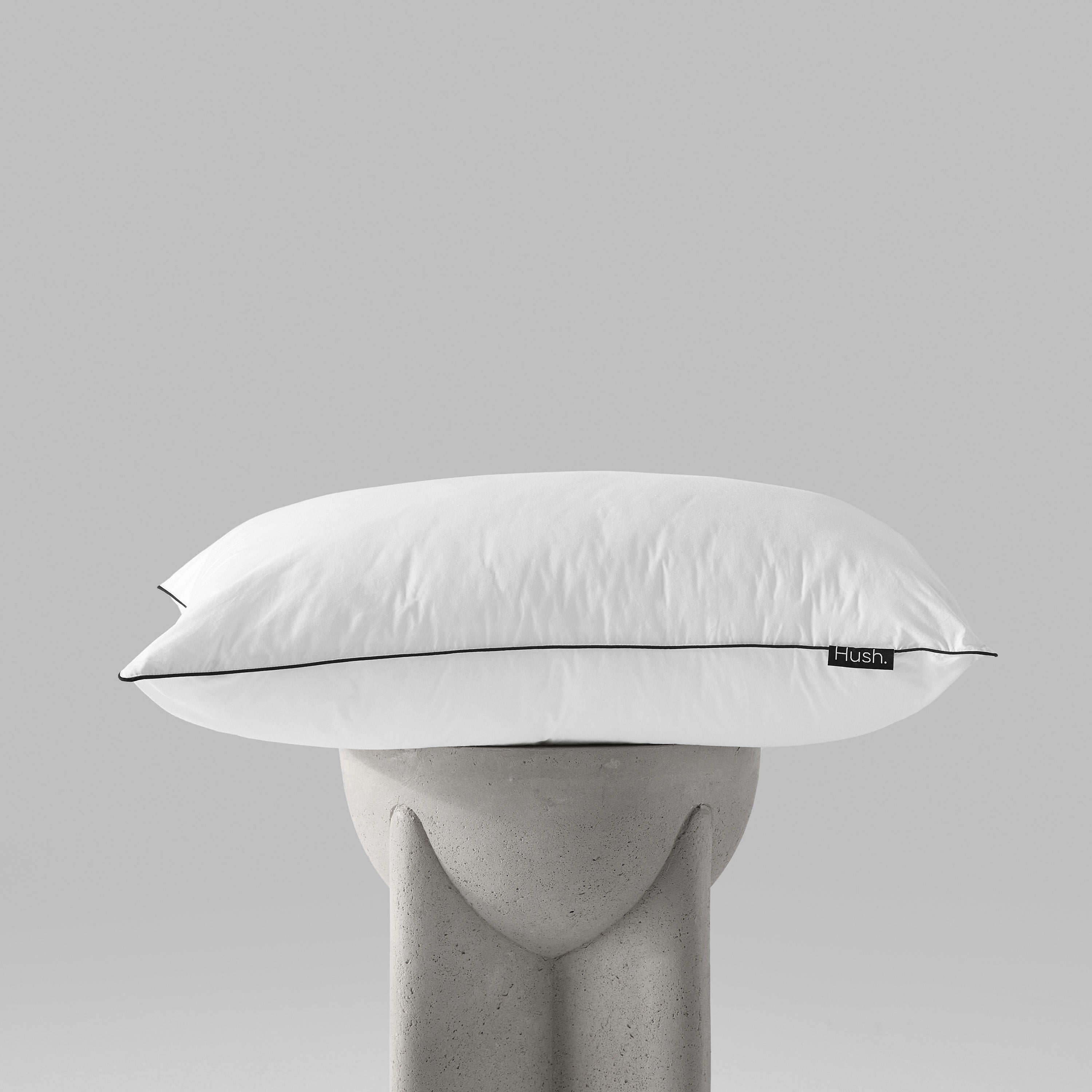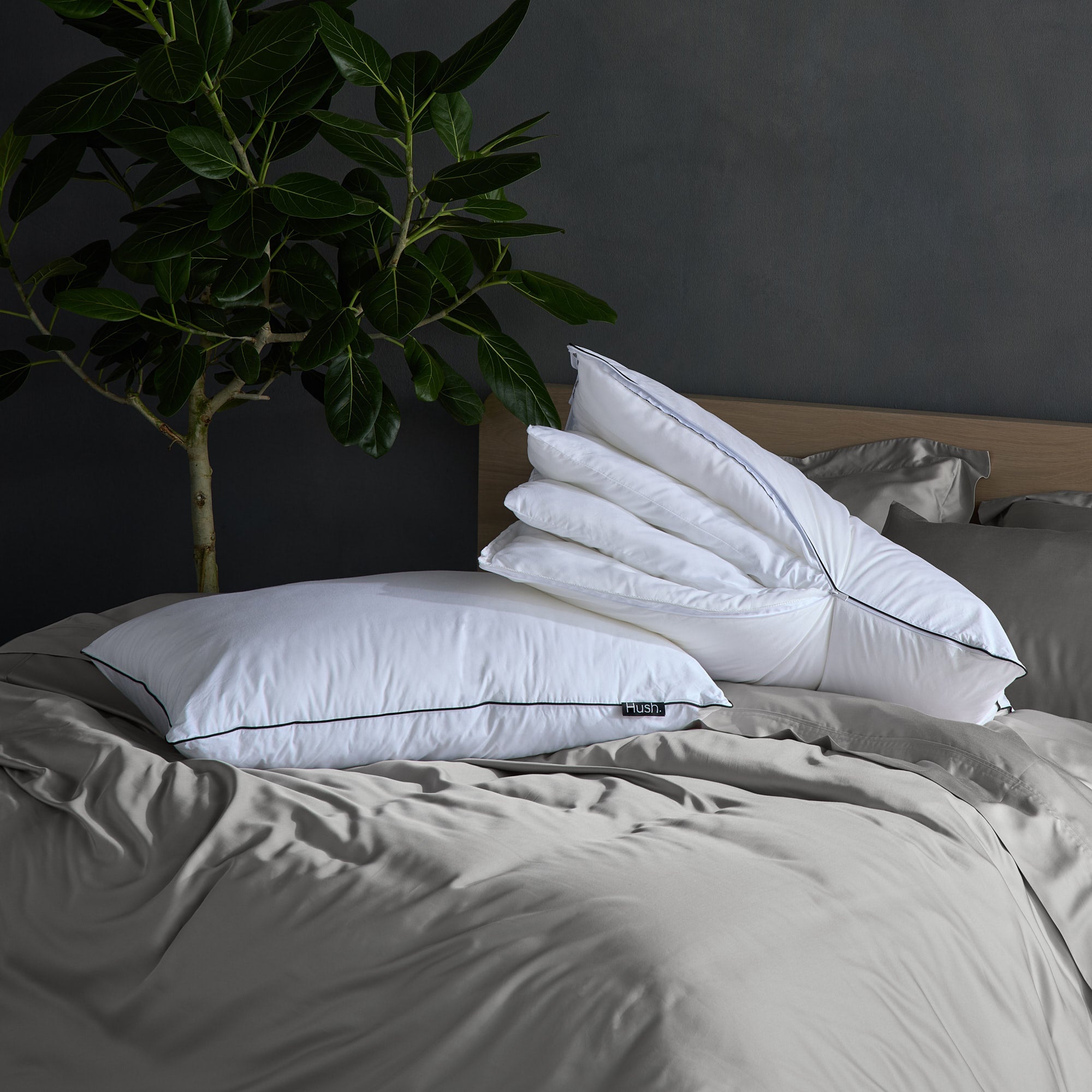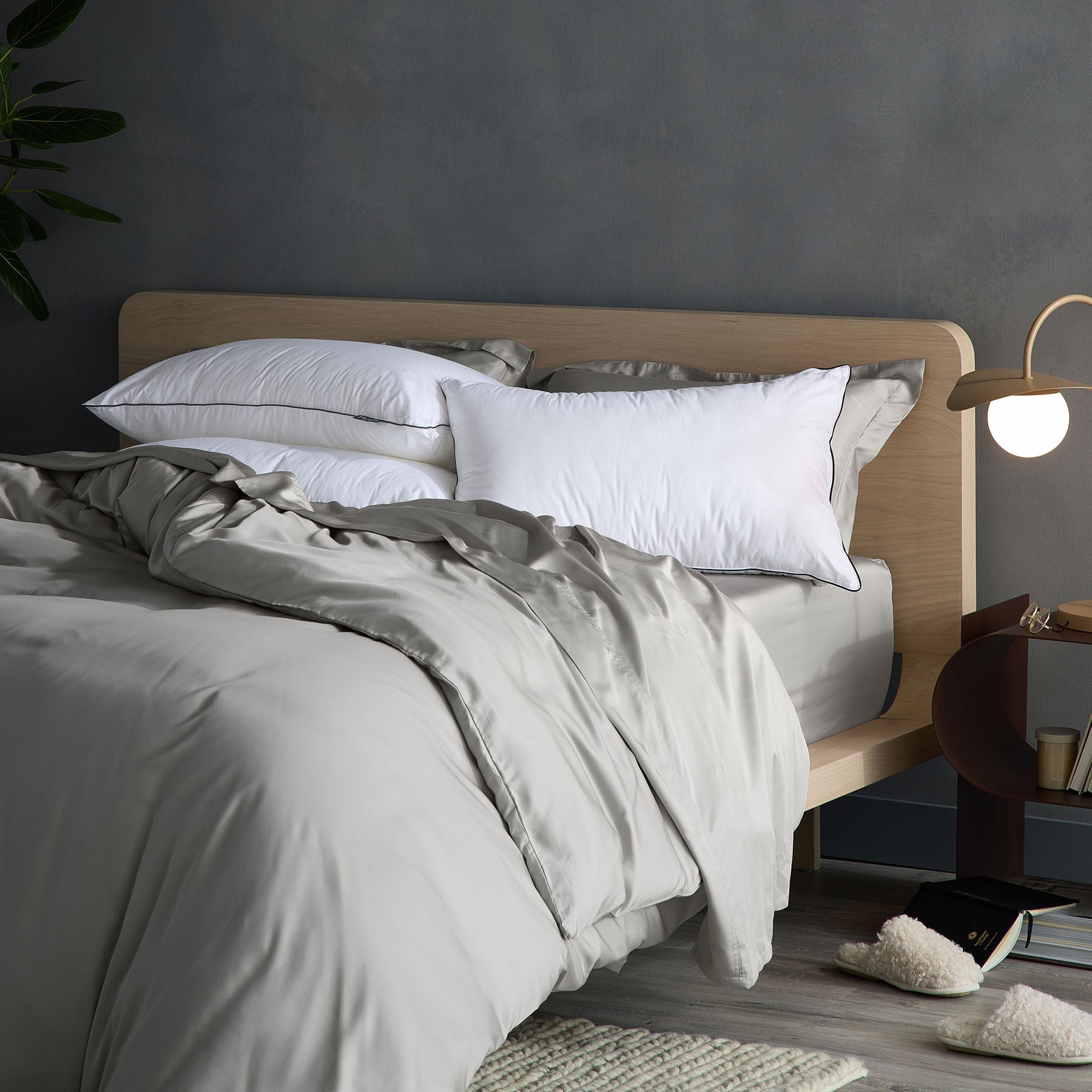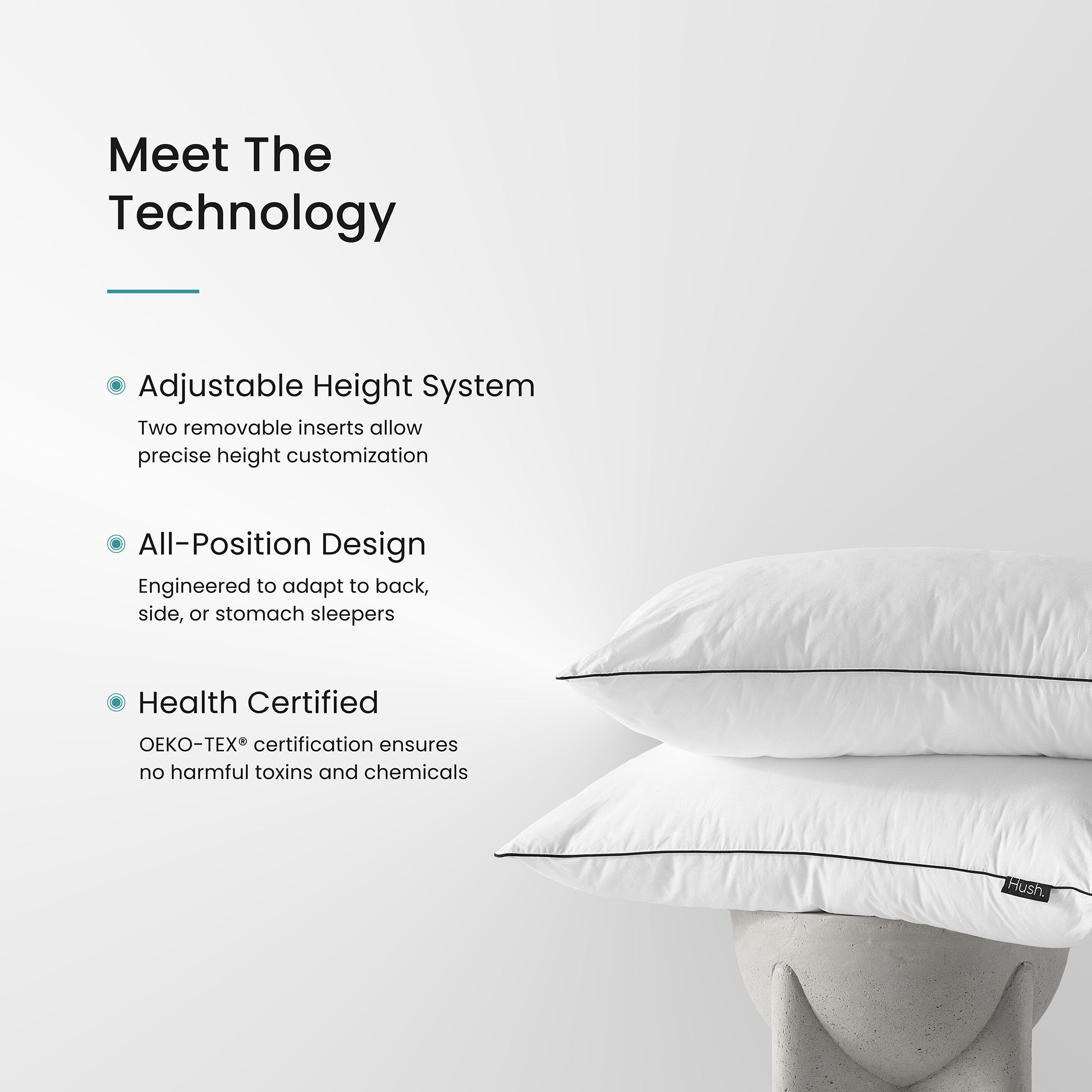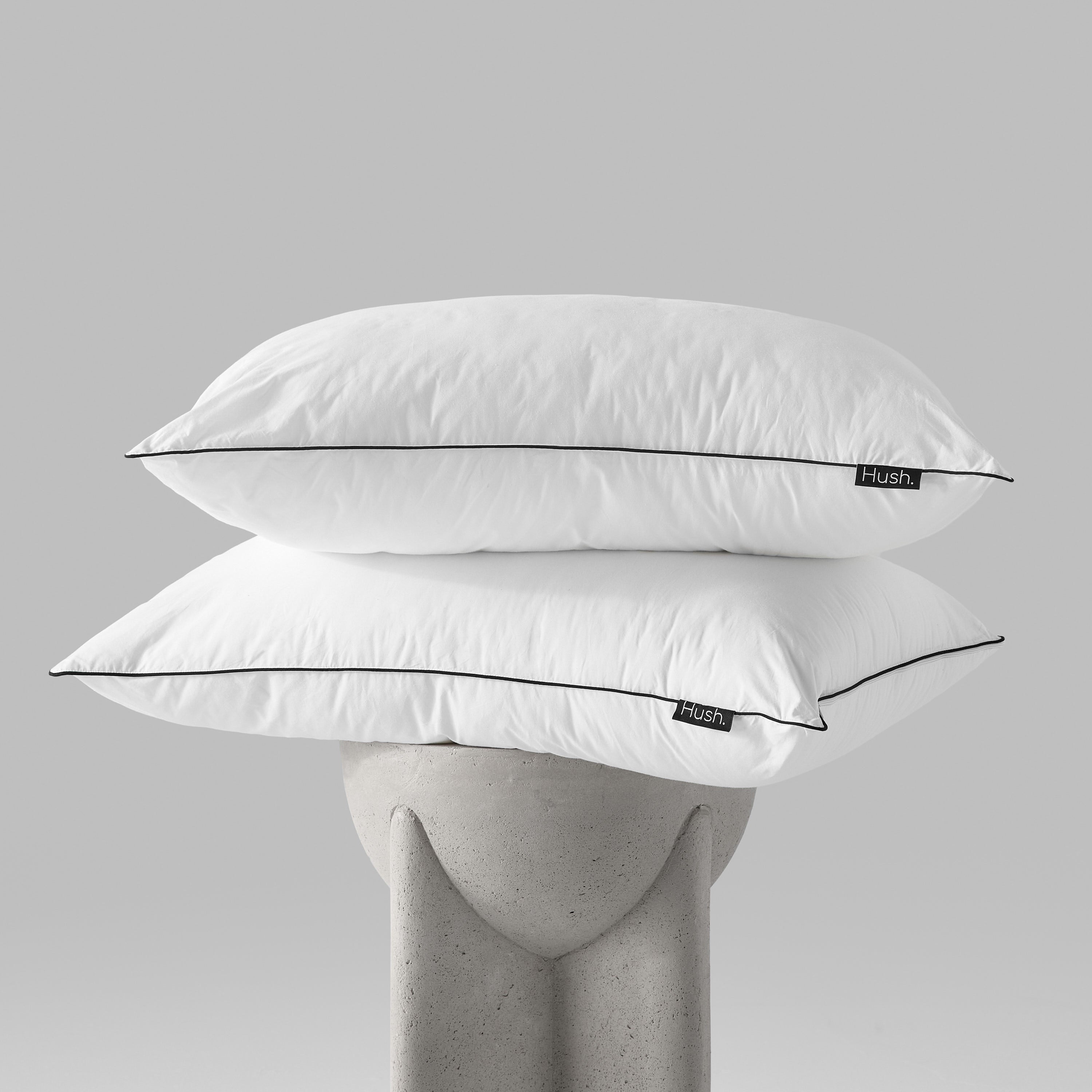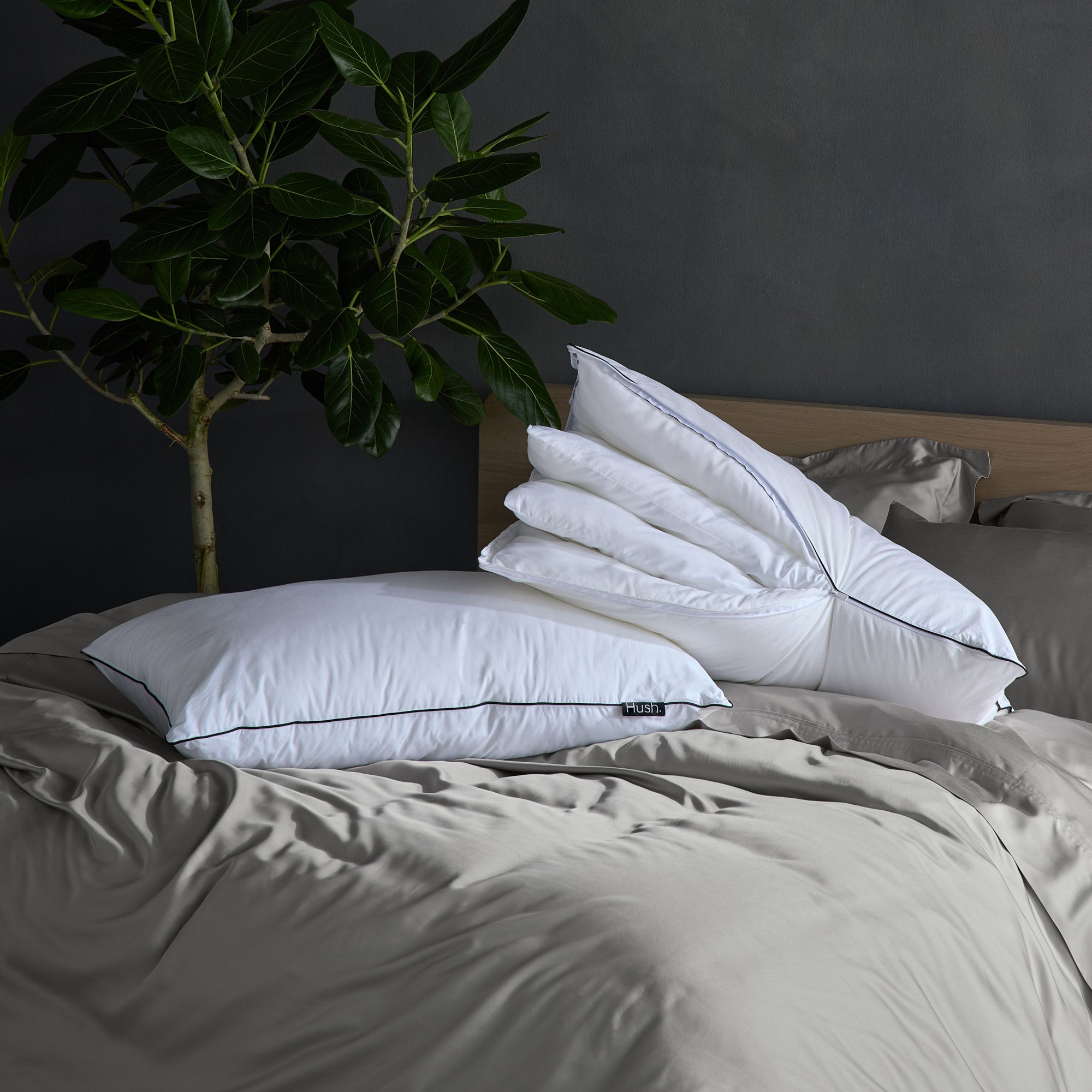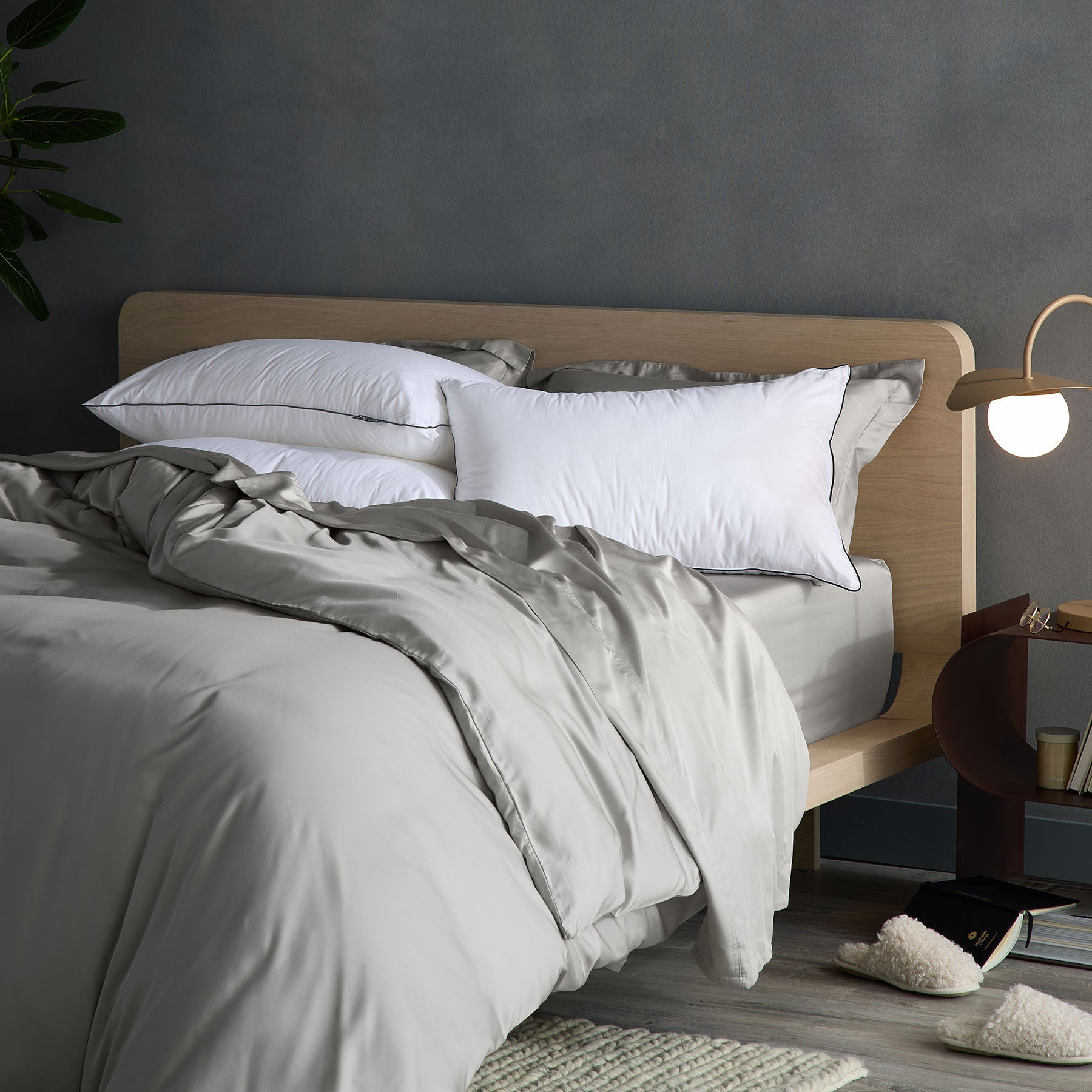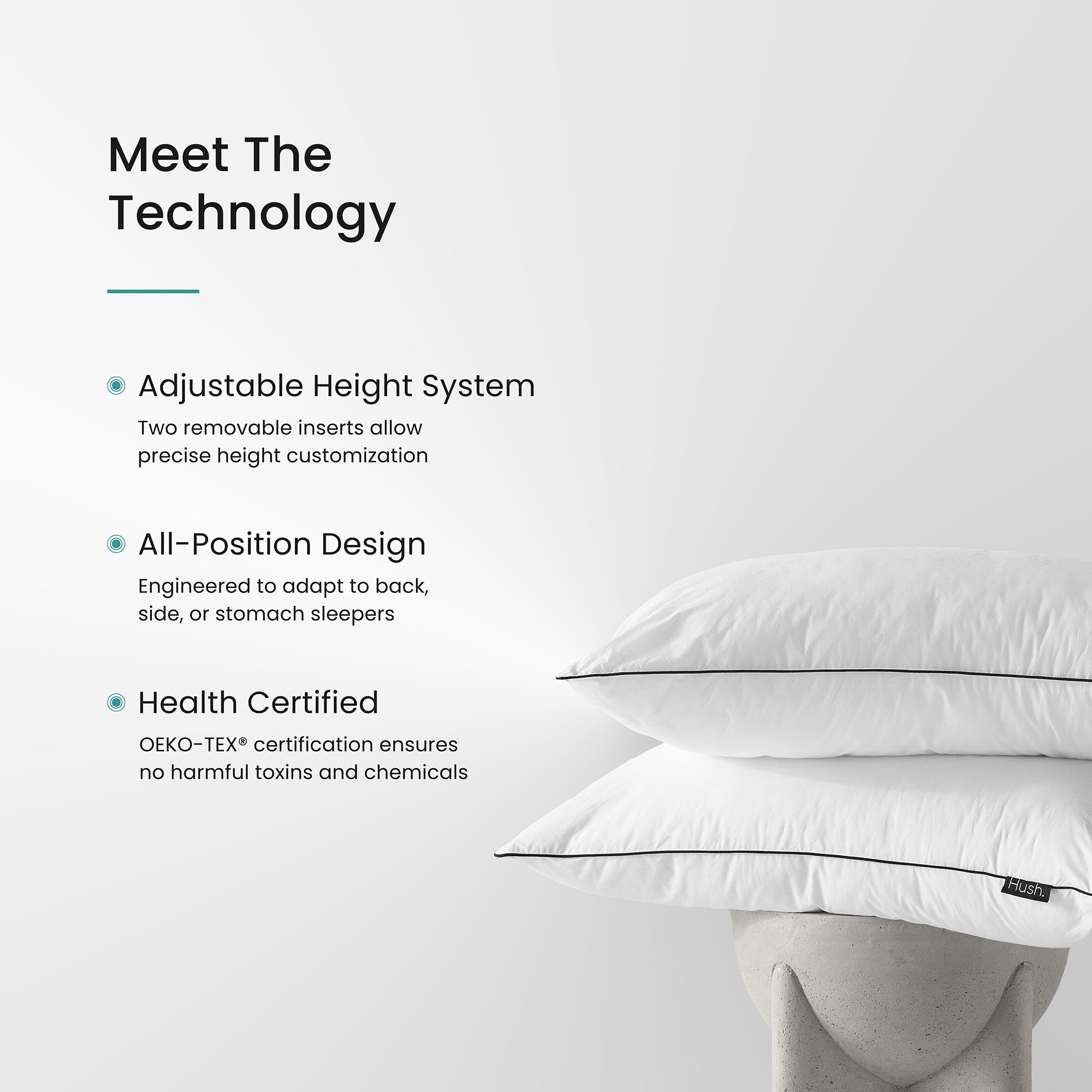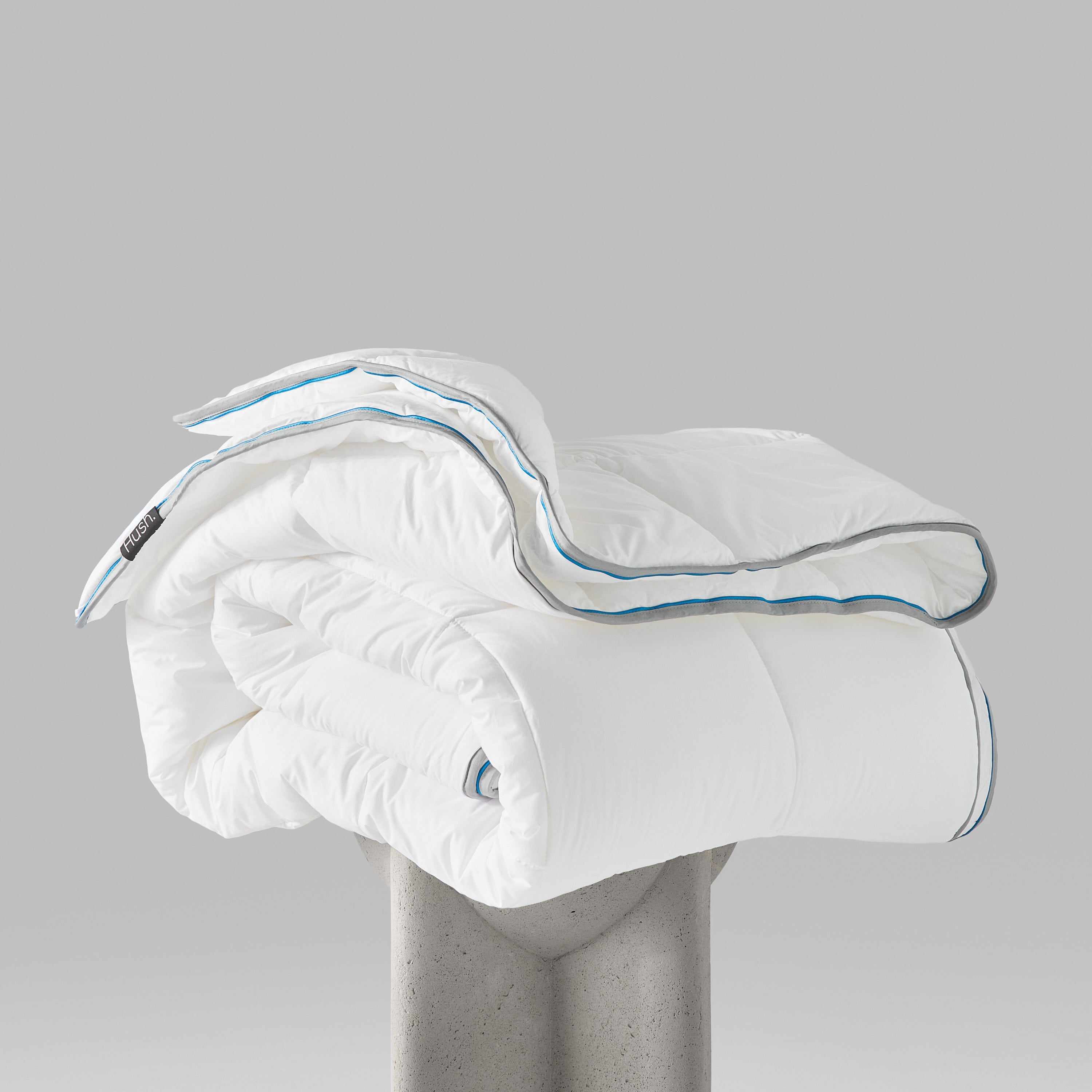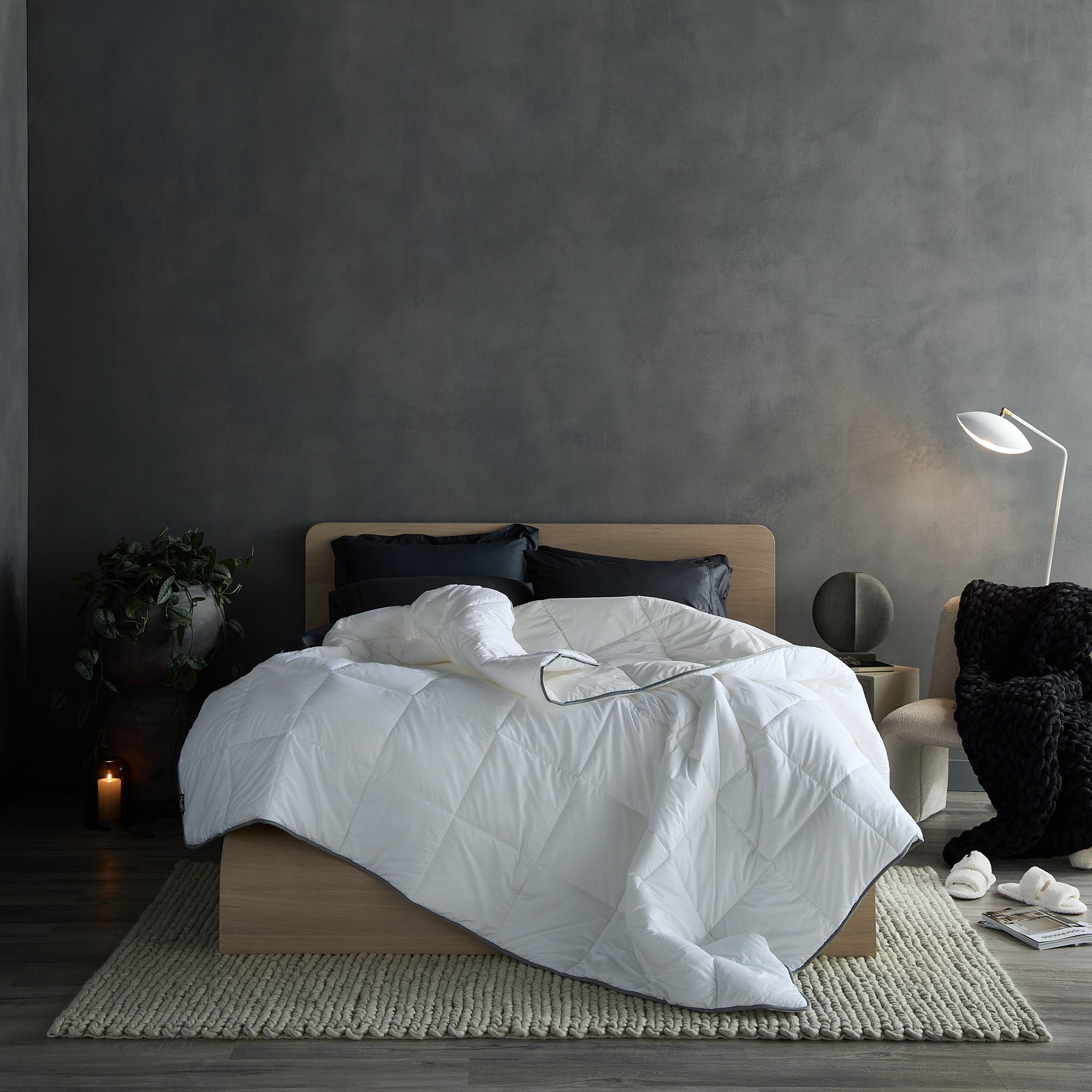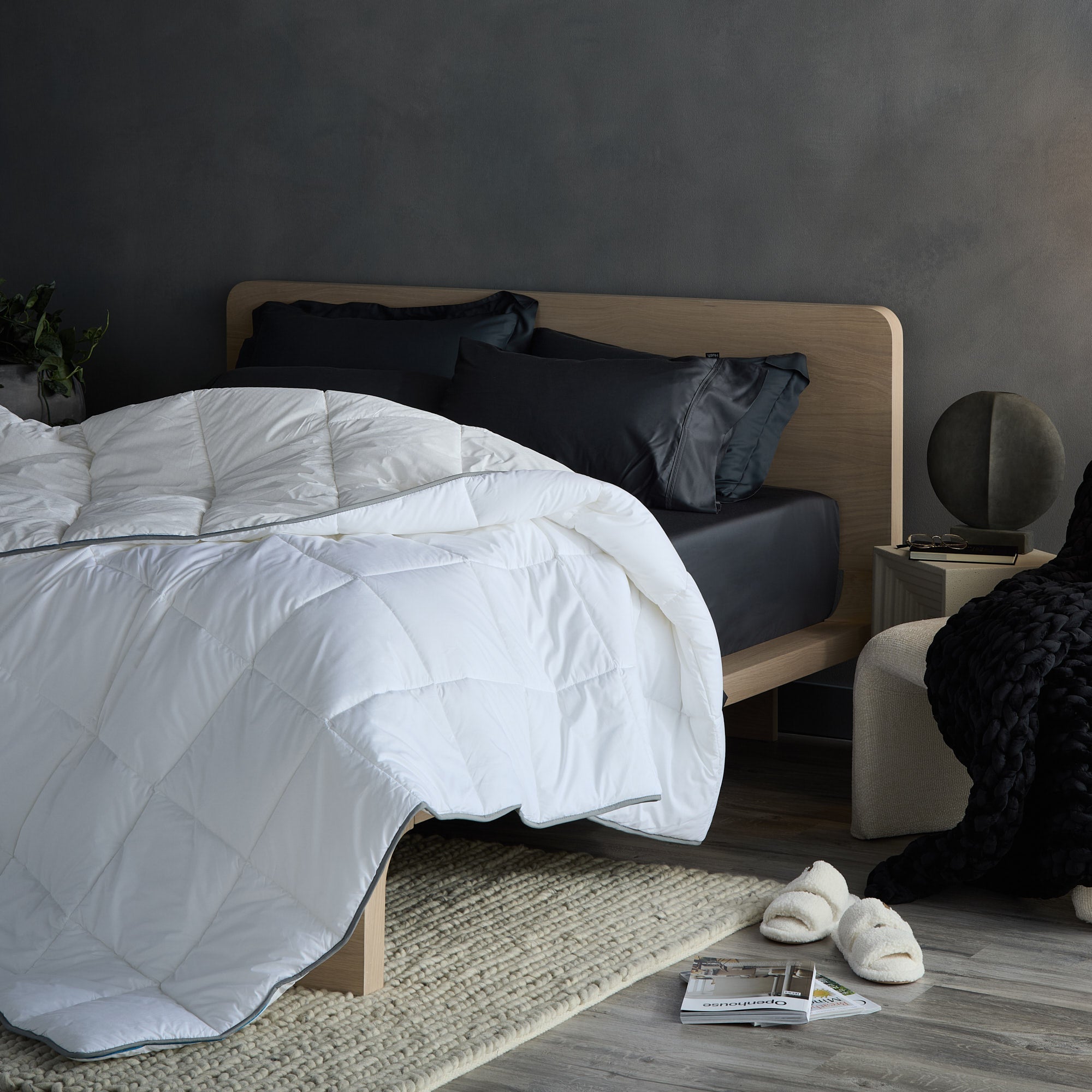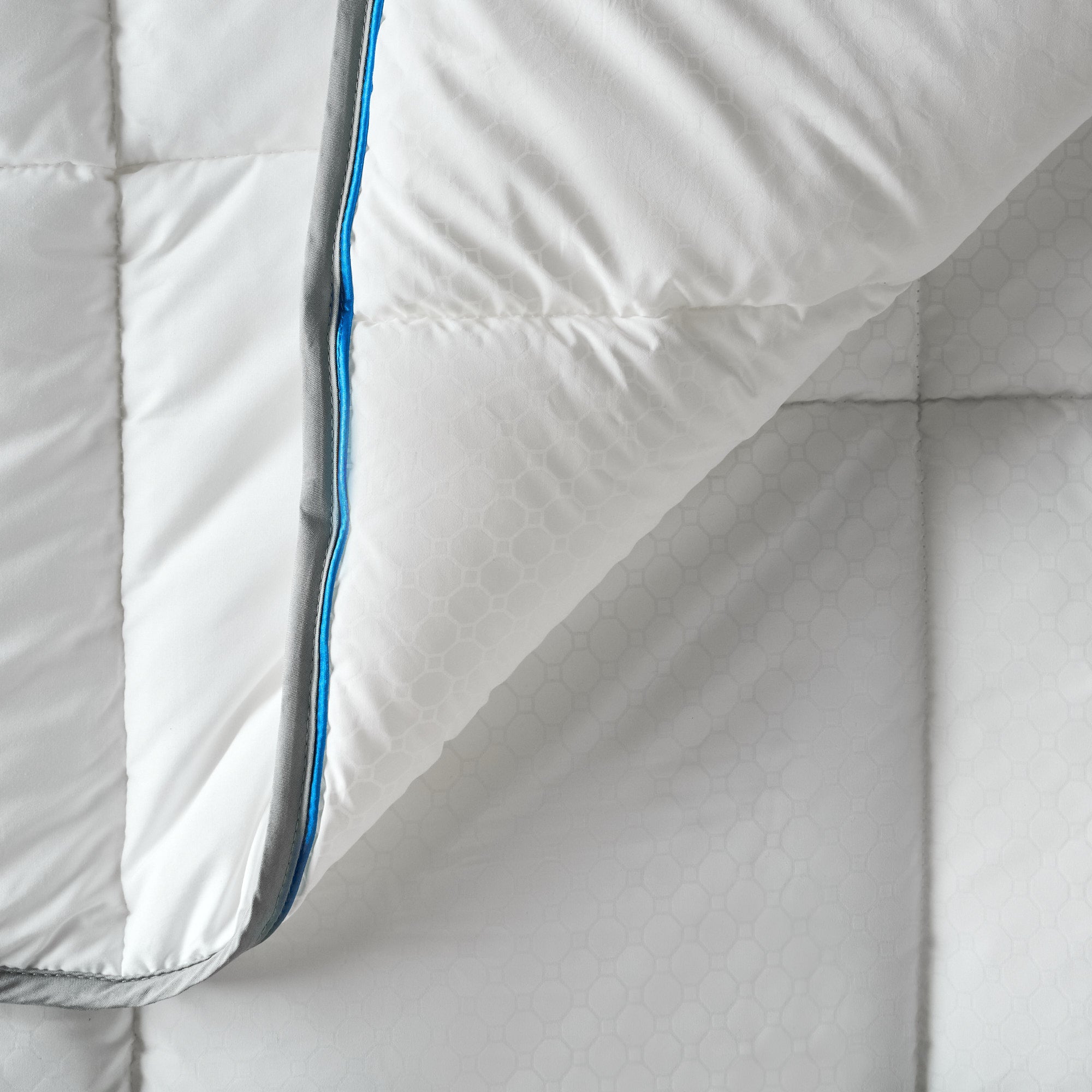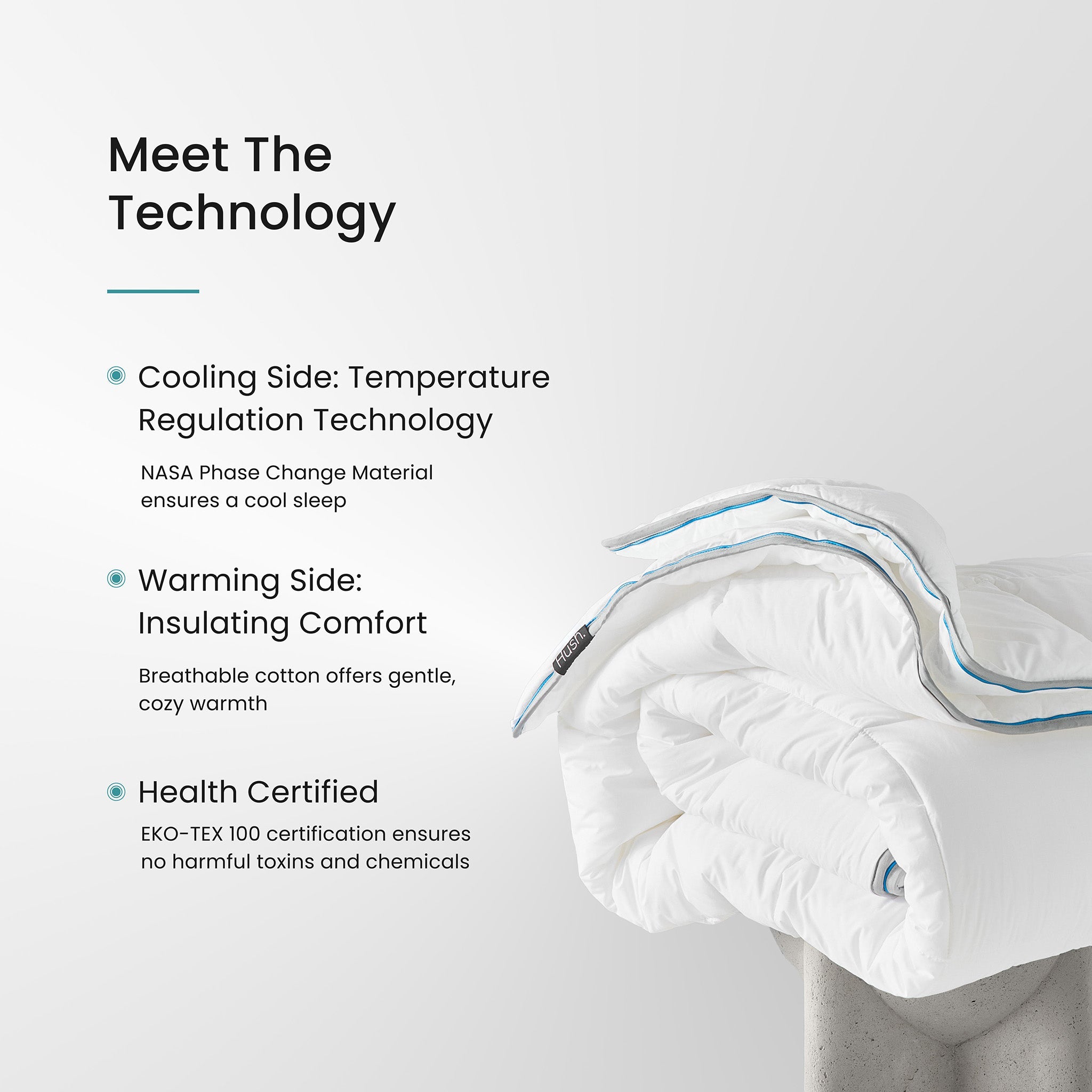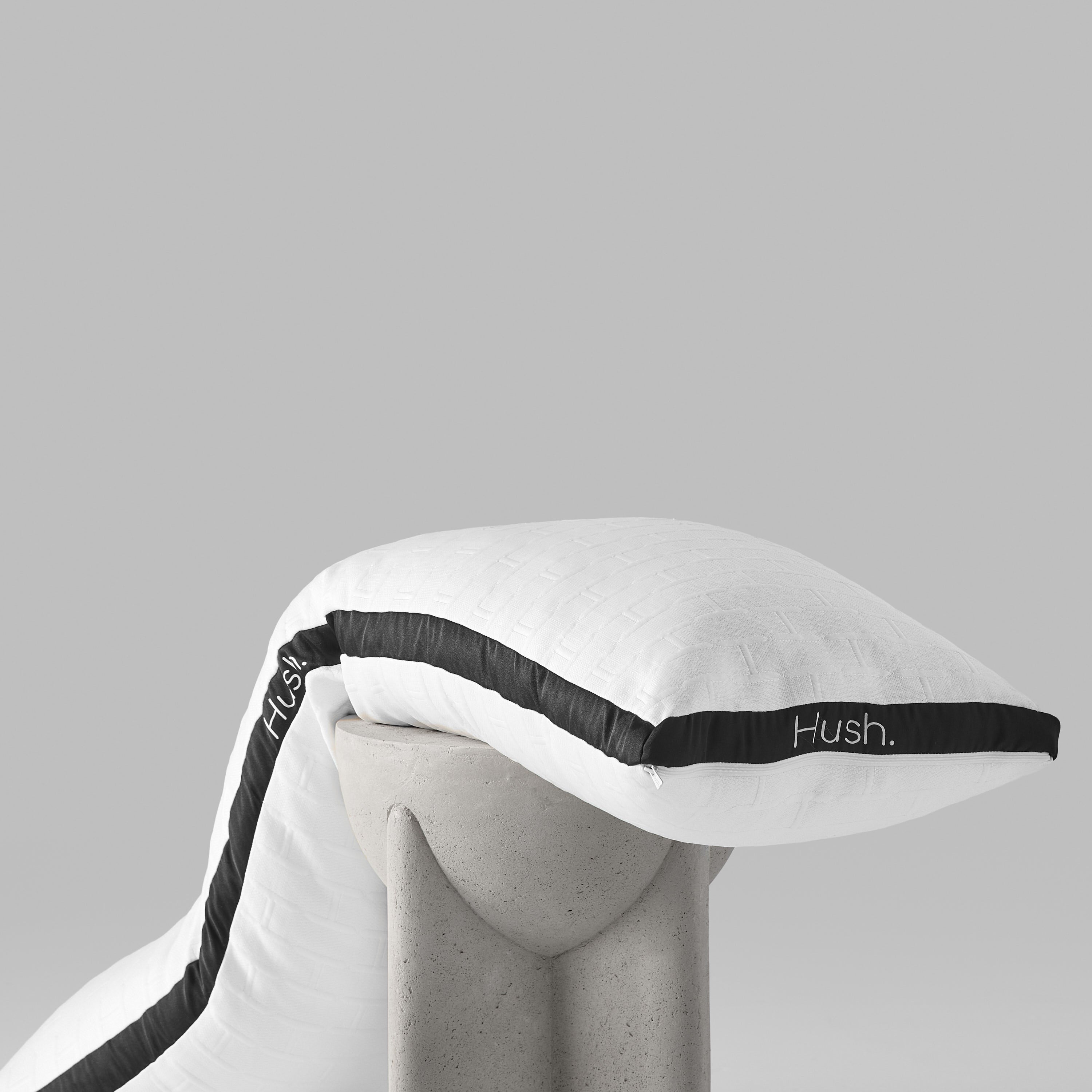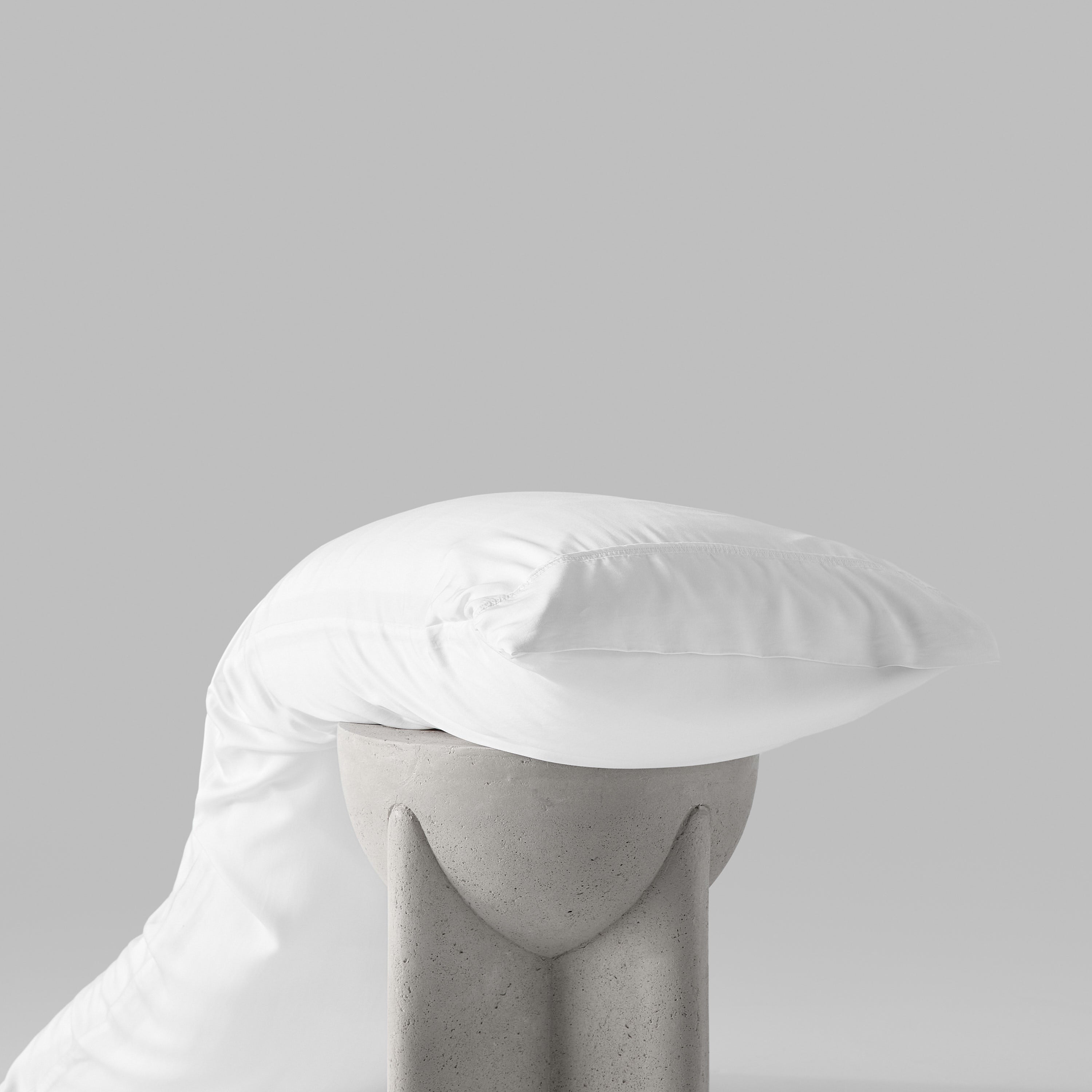Weighted blankets are growing in popularity during the pandemic as stress levels increase and we need to be at home more.
We’re all looking for ways to improve our self-care. We want to feel relaxed and calm, and we need support to do it. Weighted blankets can help.
If you’re thinking about purchasing your first-ever weighted blanket, we’ve put together a handy guide that addresses some questions people commonly ask about these blankets:
- What are weighted blankets made of?
- What are weighted blankets filled with?
- How do weighted blankets work?
Read on to find out.
What Are Weighted Blankets Made Of?

In a nutshell, weighted blankets consist of three components: the blanket, blanket cover, and the filler or inner weight, which is what makes the blanket heavy.
Weighted Blanket Covers
Many weighted blankets come with a fabric cover to provide cushioning between the inner weight and the user’s body. Typical covers are made of polyester, cotton, fleece, or chenille. Weighted blanket covers are either sewn on or removable.
Fabrics used to create weighted blanket duvet covers include cotton, flannel, fleece, minky, rayon, linen, and microfiber. To make your life easier, we recommend getting a blanket with a removable cover. A removable cover likely means your blanket is hand or machine washable, which means fewer trips to the dry cleaner.
The next question is what fabric to look for when purchasing a weighted blanket.
Weighted Blanket Fabrics
Now, this really boils down to personal preference. Each fabric comes with its own advantages. Organic cotton, for example, is soft and eco-friendly, and microfiber and minky fabrics are warm and great for snuggling up in.
Each type of fabric has its own level of breathability. If your body temperature is naturally on the warmer side, you'll want something more breathable, like cotton or bamboo viscose. These fabrics will keep you more comfortable because they pull sweat away from your body and allow more air to circulate. Bamboo viscose is also hypoallergenic, so this is a great choice if you suffer from skin sensitivities or other allergies.
On the other hand, if you tend to sleep cold, you might want to consider a quilted cover. This cover will help keep your heat around your body, which will help you stay warm. Or, consider a 2-in-1 bundle from Hush Blankets for the benefits of both blanket types.
Hand-Knitted Weighted Weaves
While most weighted blankets have layers, we also know of some weighted blankets that are made of hand-knitted weighted weaves. The density of the weave and diameter of the yarn gives the blanket its weight. In this case, the weaves add weight to the blanket, as these blankets don’t include fillings. That said, these are usually DIY weighted blankets, and we can’t vouch for their effectiveness.
Now that you know the answer to the question "What are weighted blankets made of?" we can talk about the inner weights.
What Are Weighted Blankets Filled With?

There are three main categories of inner weight used in weighted blankets:
- Plastic poly pellets
- Micro glass beads
- Steel shot beads
We’ll walk you through each of these inner weights, so you can figure out which is the best fit for you.
Plastic Poly Pellets
First up, plastic poly pellets are small, round plastic beads that feel like pebbles. These are made from polypropene, which means that they’re considered safe and non-toxic.
Note that as compared to other inner weights, plastic pellets aren’t the smoothest or most comfortable. If your plastic pellet heavy blanket isn’t properly constructed, it could feel lumpy or uneven, which won’t help you get restful sleep.
On top of that, plastic poly pellets can sometimes give off an off-putting odor. You'll need to let your blanket off-gas, or release chemicals trapped in the protective wrapping. After a few days, the smell dissipates.
If you’re considering getting a weighted blanket that’s filled with plastic poly pellets, look for a brand that uses high-quality poly pellets made from 100% virgin polypropylene. They will have less chemical off-gassing.
You should also check if the pellets can withstand your washing machine and dryer — not all poly pellets have high temperature ratings.
Micro Glass Beads

Another type of inner weight is micro glass beads. They are so small, they resemble grains of sugar. Micro glass beads are a lot smaller than plastic poly pellets, and this allows them to sit more densely within the blanket.
Generally speaking, weighted blankets filled with glass beads are thinner than blankets filled with poly pellets, and they also tend to lie more smoothly on the user’s body. This type of blanket will conform to your body better and will increase the deep touch pressure the blanket gives you. That pressure is exactly why weighted blankets give you those calm, peaceful vibes.
Hush Blankets uses glass sand as a filler. This is similar to micro glass beads but even smaller. This glass sand is contained within your weighted blanket in more densely packed pockets in order to offer even weight distribution across your body. The blanket feels custom-made because it is designed to have an even stronger calming effect on you.
Steel Shot Beads
Last but not least, you’ll also find weighted blankets stuffed with steel shot beads, which are heat-treated micro steel balls. The heating makes the balls harder, so they don’t warp or dent. The steel beads stay extremely smooth to touch, which means that they don’t retain a lot of dirt.
Steel beads, however, tend to be slightly larger than glass beads, so they don't conform to your body as well and can be lumpy and noisy. This isn’t ideal when you're trying to get much-needed rest. For maximum comfort and durability, look for weighted blankets with high-quality fabrics and inner weights, like bamboo viscose and micro glass beads.
Other Inner Weights: Sand, Grain, Pebbles

You may have heard of a handful of unorthodox weighted blanket materials. Often, these blankets use more natural inner weights such as sand, hulled crop grains, pebbles, etc. These inner weights are especially popular in DIY weighted blanket instructions.
Here’s a word of advice: Should you see a weighted blanket that uses these non-traditional stuffers, walk the other way.
These stuffers have a much lower quality than poly pellets, glass beads, or steel beads. They will leave you uncomfortable at best and with a pile of inner weight material at worst.
Take sand, for example. Sand clusters inside the pockets of blankets (instead of spreading out, like glass beads or poly pellets do). So if you’re using a weighted blanket filled with this stuffer, you’ll likely see large and uneven bumps in the fabric.
On top of that, sand expands when it comes into contact with water, making washing your blanket a challenge
As for hulled crop grains (such as buckwheat) as fillers, these not only expand when they come into contact with water — buckwheat will rot. You definitely don’t want that!
Then there are pebbles and aquarium stones, which also don’t work as effectively as poly pellets, glass beads, or steel beads.
The main problem with pebbles and aquarium stones is they’re organic, porous materials. Once these materials come into contact with water, it’s hard for them to dry completely.
In other words: Once you wash a weighted blanket filled with pebbles or aquarium stones, the blanket will retain moisture, and it’ll eventually start to get moldy.
How Weighted Blankets Work

Weighted blankets work by adding pressure to your body that overrides your nervous system and helps you calm down and relax. It's often compared to a really good hug, but one you can give yourself.
The heavy blankets got their start in pediatric therapy. As Understood.org explains, occupational therapists realized children with sensory processing disorders, ADHD, and autism spectrum disorders often benefited from using weighted vests. The vests were heavy and moderately tight, and the weight and pressure encouraged kids to slow their breathing and breathe deeply. Taking slow, deep breaths soothes the nervous system, slows heart rate, and increases serotonin production.
Weighted blankets work the same way as the weighted vests but are more comfortable and can be used over your entire body. Just keep in mind a blanket should weigh up to about 10% of your body weight. Any higher and it could be uncomfortable or unsafe.
While heavy blankets are safe for most people, if you have underlying health conditions that affect your heart or your breathing, seek medical advice before you use one.
Experience the Magic of a Weighted Blanket

Now that we’ve answered “What are weighted blankets made of?”, it’s time to consider adding one to your home. There’s a reason so many people are gushing about weighted blankets. They are great for anyone who’s dealing with sensory issues, restless leg syndrome, insomnia, anxiety, and other stress-related issues.
If you want to experience the magic of a weighted blanket for yourself, check out Hush Blanket.
With our 100-night guarantee on all Hush Blankets, you can test-drive our blankets risk-free. If you decide that the Hush Blanket isn’t for you, just ship the blanket back to us and we’ll process a refund.

